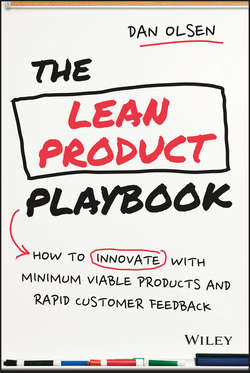Читать книгу The Lean Product Playbook - Olsen Dan - Страница 12
На сайте Литреса книга снята с продажи.
Part I
Core Concepts
Chapter 2
Problem Space versus Solution Space
The Space Pen
ОглавлениеMy favorite story to illustrate the concept of problem space versus solution space is the space pen. When NASA was preparing to send astronauts into space, they knew that ballpoint pens would not work because they rely on gravity in order for the ink to flow. One of NASA's contractors, Fisher Pen Company, decided to pursue a research and development program to create a pen that would work in the zero gravity of space. After spending $1 million of his own money, the company's president, Paul Fisher, invented the Space Pen in 1965: a wonderful piece of technology that works great in zero gravity.
Faced with the same challenge, the Russian space agency equipped their astronauts with pencils. You can actually buy a “Russian space pen” (which is just a cleverly packaged red pencil).
This story shows the risk of jumping into the solution space prematurely and the advantage of starting in the problem space. If we constrain our thinking to “a pen that works in zero gravity,” we may not consider creative, less-expensive solutions such as a pencil. In contrast, having a clear understanding of the problem space (devoid of any solution space ideas), allows for a wider range of creative solutions that potentially offer a higher return-on-investment. If the pencil and space pen were equally adequate solutions, then avoiding one million dollars of research and development cost would clearly be the preferable alternative.
To avoid fixating on pen-based solutions, we could rephrase the problem space as: “a writing instrument that works in zero gravity.” That would allow for a pencil as a solution. But that's still anchored on “a writing instrument” solution. We can do even better than that: “a way to record notes in zero gravity for later reference that is easy to use.” That problem space statement would allow for more creative solutions such as voice recording with playback. In fact, considering out-of-the-box solution ideas can help you refine your problem space definition, even if they aren't feasible. In this case, a voice recorder would probably not be as good a solution as a Space Pen. It would need a power source and would require playback to refer to the notes again, which would be less convenient than being able to scan and read them. But undergoing this thought exercise would allow us to further refine our problem space definition to: “a way to record notes in zero gravity for convenient reference later on that is easy to use, is inexpensive, and does not require an external power source.”
I always like to clarify that this example is by no means an attempt to make fun of NASA. I tell the story a certain way to highlight the point I want to make. Indeed, the conclusion that NASA came to turned out to be the best one. There are good reasons not to use pencils in space: the lead tips can break off and float into an astronaut's eye or cause a short in an electrical connection. After the tragic Apollo 1 fire in 1967, NASA required all objects in the cabin to be nonflammable, including the writing instruments. So the Space Pen actually was a useful innovation, which the Russian space agency also adopted.
When I mention the space pen in my talks, there is often someone who claims that the story is an urban legend. However, it isn't, as NASA explains at http://history.nasa.gov/spacepen.html, and the Fisher Space Pen Company confirms at http://fisherspacepen.com/pages/company-overview. The key point of debate usually is, who spent the money on research and development: NASA or Fisher? Fisher did, as I pointed out above.
